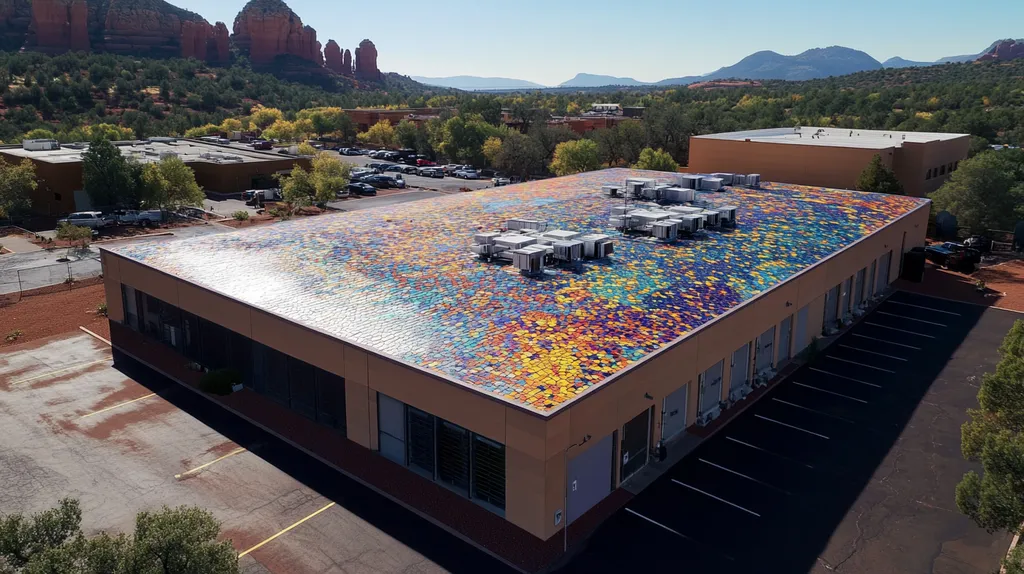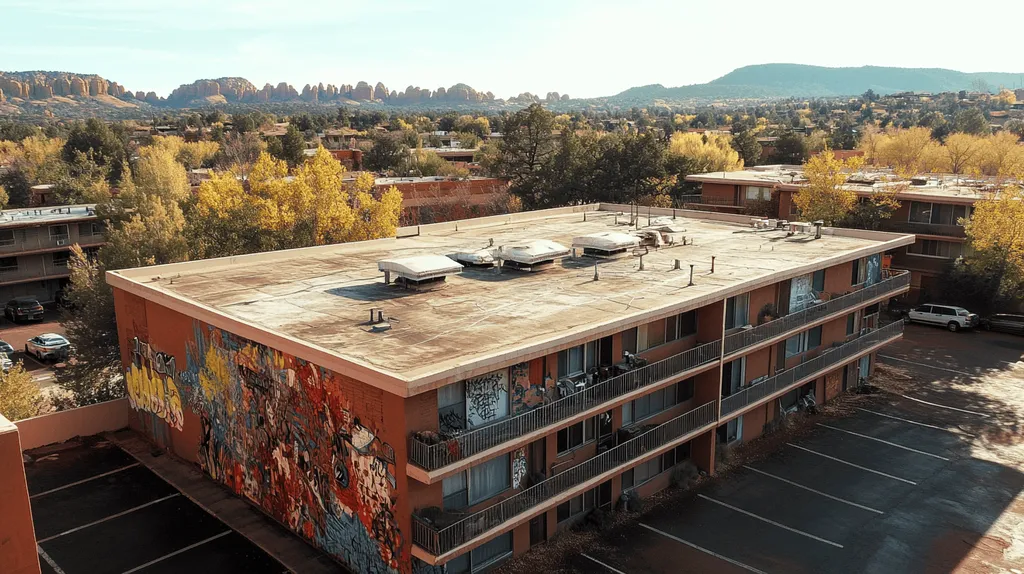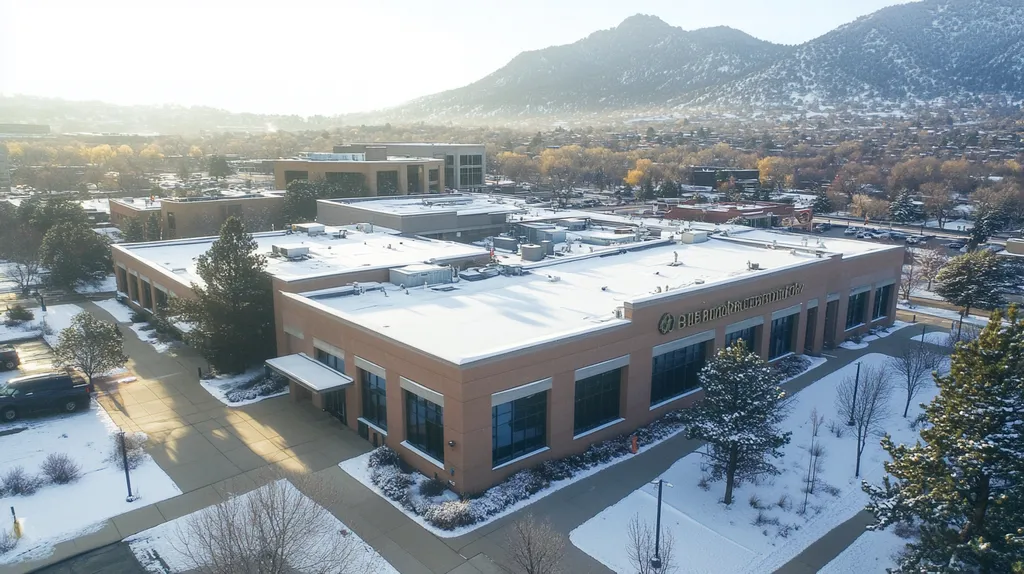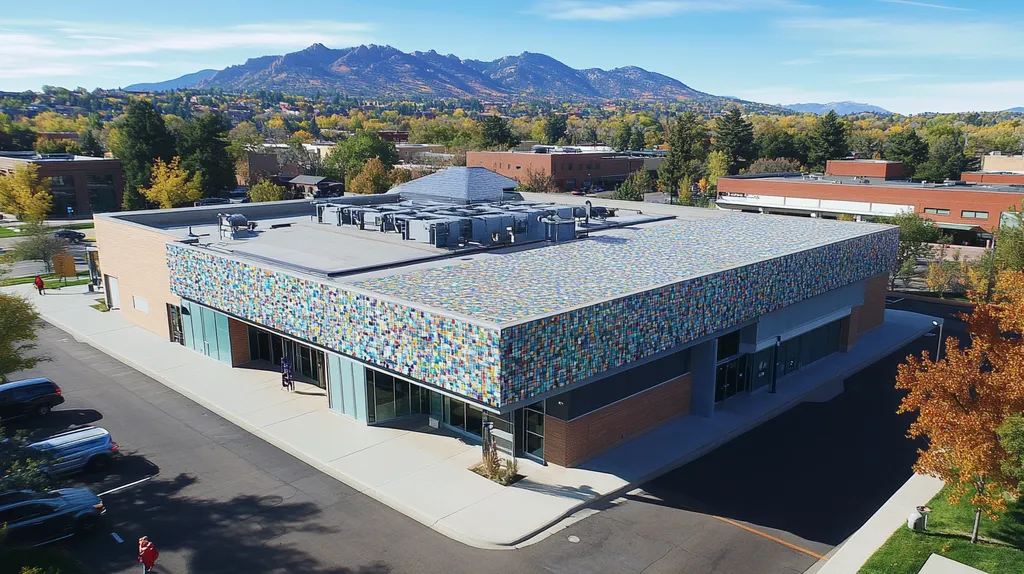As historic commercial buildings face unprecedented challenges from climate change and rising energy costs, property owners must navigate the delicate balance between preservation and modernization. Studies show that 65% of historic commercial roofs require significant upgrades within the next decade to remain viable.
The stakes are particularly high when considering that improper renovations can decrease property values by up to 30% while violating preservation ordinances.
This comprehensive guide examines critical aspects of upgrading historical commercial roofs, from material selection to performance metrics, ensuring that modern improvements honor architectural heritage while meeting contemporary standards.
SECTION 1: FUNDAMENTAL CONCEPTS
Upgrading a historical commercial roof isn’t merely a cosmetic endeavor; it can fundamentally enhance a property’s value and charm. With more than 70% of millennials drawn to distinctive and iconic buildings, property owners face a crucial opportunity. Mastering the nuances of historical roofing is vital for both compliance and aesthetics. This section outlines essential considerations to guide property owners through this intricate upgrade process.
Understanding Historic Roofing Materials
Historical roofs often showcase unique materials such as slate, tile, and handcrafted metal. These components not only elevate the building’s visual appeal but also play a critical role in its structural integrity. When maintaining or replacing these materials, property owners must choose period-appropriate options that preserve the building’s character.
For example, using modern asphalt shingles on a Victorian-era structure can undermine its authenticity. It is key for property owners to prioritize authentic materials that reflect the original design. This commitment to historical accuracy not only aids in preservation but also enhances market value.
Working with historical preservation specialists is a wise move, as they can help identify the most suitable materials. Engaging local suppliers may also yield access to historically accurate products, ensuring each restoration respects regional preferences. By focusing on original materials, property owners reinforce cultural heritage and amplify architectural significance, ultimately fostering community pride.
Architectural Significance and Preservation Laws
The architectural significance of a historical roof is paramount. These buildings encapsulate cultural histories and community identities, making their preservation essential. Preservation laws are designed to protect these structures from inappropriate changes that may compromise their historical integrity.
Property owners must familiarize themselves with local preservation ordinances before undertaking roof upgrades. Certain jurisdictions may require a review process that mandates adherence to specific design standards. Understanding these legal frameworks not only ensures compliance but can also prevent unexpected fines.
Engaging with local historical societies can provide valuable resources. They can guide property owners through preservation requirements and recommend experienced contractors specializing in historical restoration. By aligning projects with both architectural significance and compliance, property owners safeguard their investments.
Additionally, visual harmony within neighborhoods can draw tourists and uplift local economies. An exquisitely preserved roof enhances the overall aesthetic, benefiting not just individual property owners but the community at large.
Historical Construction Methods and Techniques
Historical roofing methods varied widely across different eras, influencing their durability and maintenance needs. Techniques like hand-fitted slate installation or copper roofing found in historical buildings often demand specialized expertise. Recognizing these methods ensures that upgrades maintain the integrity of original constructions.
For instance, older roofs may include unique underlayment systems that contribute to their longevity. Modern roofing professionals must familiarize themselves with traditional methods to replicate original craftsmanship effectively. Ignoring these techniques could lead to structural weaknesses and visual discrepancies.
Moreover, the application of modern tools and practices sometimes conflicts with traditional designs, creating tensions in both appearance and function. Property managers should seek contractors who appreciate historical context and are skilled at harmonizing modern techniques with traditional artistry.
Ultimately, preserving original construction techniques honors the building’s history while often improving energy efficiency and longevity. By opting for historically accurate upgrades, property owners can ensure their buildings endure the test of time, all while staying true to their roots.
SECTION 2: SYSTEM COMPONENTS
The choice of roofing materials is a pivotal decision in upgrading a historical commercial roof. Selecting inappropriate materials can lead to not only financial losses but also the erosion of a building’s aesthetic appeal. In fact, studies indicate that improper material selection can increase maintenance costs by as much as 30%. A comprehensive understanding of both traditional and modern materials—along with compatible insulation and drainage systems—is essential for maintaining functionality and preserving visual integrity.
Traditional Roofing Materials: Slate, Copper, Wood
Traditional materials like slate, copper, and wood have earned their place in history for a reason. These elements not only enhance the unique character of historical buildings but also offer exceptional durability. For instance, slate roofs can endure for over a century, while copper develops a protective patina that adds to its allure.
Wood shake roofs also play a vital role in preserving the authenticity of many historical structures. Although they require regular maintenance, diligent care can extend their lifespan and keep their classic beauty in check. Utilizing these time-honored materials often aligns with local building codes that protect a property’s architectural integrity.
However, it is essential for property owners to collaborate with professionals who grasp the specific requirements of these materials. Expert installation can prevent common pitfalls such as leaks or deterioration, ensuring the roof remains sound for future generations.
Ultimately, traditional materials are not only aesthetically pleasing but also structurally vital. Preserving the essence of a building’s original design is crucial for cultural heritage and property value.
Modern Alternatives for Historic Roofs
While traditional materials are often preferred, modern alternatives are increasingly available that can meet contemporary needs without sacrificing aesthetics. For example, composite shingles can imitate the appearance of slate or wood while providing enhanced durability and reduced weight. These alternatives can blend seamlessly into a historical context, maintaining the charm of the original building.
Additionally, metal roofing in historically authentic designs presents an exciting option. Today’s metal roofs come in a variety of colors and profiles, allowing property owners to preserve the building’s character while benefiting from improved energy efficiency and longevity.
Advancements in synthetic materials also offer weather resistance and structural stability. These products can effectively mimic the appearance of traditional materials, combining the best of both worlds: historical aesthetics and modern performance. When opting for modern alternatives, property owners can blend history with innovation.
Choosing the right modern alternative requires careful evaluation. Property owners should consult roofing professionals who are well-versed in both historical aesthetics and contemporary materials to ensure optimal outcomes.
Compatible Insulation and Drainage Systems
The integration of compatible insulation and drainage systems is essential for any roofing upgrade. Enhanced insulation can significantly improve energy efficiency, potentially reducing heating and cooling costs by up to 30%. For historical roofs, materials like rigid foam or spray foam can elevate thermal performance while respecting the building’s structural integrity.
Effective drainage systems are equally vital for maintaining a roof’s integrity. Many historical buildings were not designed to cope with today’s rainfall patterns, which can lead to severe water damage. Installing tapered insulation helps channel water toward drains, preventing pooling and leaks.
Furthermore, selecting discreet drainage accessories, like concealed gutters, can help preserve the roof’s historical aesthetics while efficiently managing water flow. Correct installation of these systems will significantly mitigate water-related issues.
Incorporating updated insulation alongside effective drainage is crucial for enhancing both the aesthetic and functional qualities of historical roofs. A comprehensive approach ensures that the roof continues to be an asset, rather than a liability.
SECTION 3: IMPLEMENTATION METHODS
Upgrading a historical commercial roof is a critical endeavor that significantly influences the building’s value and longevity. Statistics show that well-preserved historical structures can experience notable appreciation, attracting tenants and lowering maintenance costs. Implementing the right methods ensures that the architectural integrity is honored while enhancing functionality. This section discusses selecting a qualified roofing contractor, sourcing historically accurate materials, and effectively integrating modern systems with historic designs.
Selecting the Right Roofing Contractor
Choosing the right roofing contractor for a historical upgrade is essential. A qualified contractor should have experience with historical structures and a comprehensive understanding of preservation techniques. Given the unique challenges posed by these properties, contractors must be adept at tailoring solutions rather than relying on generic approaches.
Ensure that contractors possess relevant licenses and insurance specific to roofing projects. Reviewing their portfolios will help assess their craftsmanship and attention to historical detail. Additionally, seeking references from previous clients can provide insights into their reliability and quality of work.
Strong communication throughout the process is vital. Discuss timelines, material options, and potential challenges upfront. This proactive strategy helps set realistic expectations and minimizes unforeseen issues during installation.
In the end, selecting a knowledgeable contractor can protect a building’s integrity while ensuring compliance with both aesthetic and functional demands, leading to a successful roof upgrade.
Sourcing Historically Accurate Materials
Utilizing historically accurate materials is crucial for preserving a building’s character. These materials must not only align with the original design but also meet modern performance standards. Engaging in thorough research on period-appropriate options helps ensure choices reflect the building’s heritage.
Collaboration with local historical commissions can provide valuable insights into acceptable materials and preservation guidelines. Many areas maintain databases of manufacturers specializing in historic roofing materials, making informed decisions more accessible for property owners.
Consider the ecological footprint of the sourced materials. Whenever possible, opt for sustainable options that comply with today’s environmental standards while honoring the historical aesthetic. Reclaimed materials can offer a genuine touch of authenticity, although care must be taken to meet current safety and durability requirements.
By diligently sourcing materials that uphold the original roofing style while fulfilling contemporary performance standards, property owners can successfully merge the old with the new, enhancing both the building’s aesthetic and its value.
Integrating Modern Systems with Historic Designs
Careful consideration is required when integrating modern roofing systems with historical designs. Modern technologies can enhance energy efficiency and weather resistance without detracting from the building’s appearance. This integration should focus on achieving harmony between innovative solutions and traditional aesthetics.
For instance, implementing energy-efficient insulation beneath historical roofing materials can enhance thermal performance without compromising the classic look. Moreover, modern innovations like cool roofing options can improve energy efficiency while maintaining traditional color palettes.
Minimizing visible changes to the roof’s structure is key to retaining its historical charm. Techniques such as concealed drainage systems and integrated skylights should be assessed for their effectiveness and visual impact. Partnering with architects who are knowledgeable about both modern technology and historical preservation can ensure thoughtful implementation.
Ultimately, balancing contemporary functionality with historical significance can lead to a roof that elevates the property’s value while preserving its architectural legacy for future generations.
SECTION 4: MAINTENANCE REQUIREMENTS
Upgrading a historical commercial roof involves more than just consideration of aesthetics; proactive maintenance is crucial for sustaining longevity and preserving integrity. Failing to engage in regular upkeep can result in costly repairs and diminish a building’s historical significance. Research indicates that properties with consistent maintenance protocols can extend their lifespan by up to 25%. This section delves into the importance of routine inspections, identifying hidden damage, and adhering to local building codes.
Regular Inspection and Early Repair
Regular inspections are essential for the upkeep of historical roofs. Property owners should schedule inspections at least twice a year, particularly after severe weather events. Early identification of issues like cracked shingles or loose flashing can prevent minor concerns from becoming major problems.
During each inspection, property owners should look for signs of deterioration, such as moss growth or discoloration. These indicators may suggest underlying issues that aren’t immediately visible. A proactive maintenance strategy helps preserve roofing materials and uphold the building’s historical integrity.
Hiring professional roofing contractors experienced in historical restorations is critically important. These specialists possess the knowledge needed to uncover unique issues that might not affect standard roofs. They can propose solutions that are sympathetic to the property’s history while also adhering to current building codes.
Additionally, keeping a detailed record of inspections and repairs fosters a culture of maintenance. This documentation can be invaluable for future renovations or during the sale of the property.
Handling Hidden Damage and Layered Materials
Historical roofs frequently consist of multiple layers of materials that may conceal damages from view. When planning an upgrade, it is vital for property owners to thoroughly assess these layered structures. Lacking an understanding of the existing materials can result in partial solutions during repair or replacement efforts.
Contractors must carefully evaluate the condition of each layer, which may involve removing some materials to reveal the condition beneath. This thorough examination can uncover hidden rot or structural issues. Addressing these concerns during upgrades is crucial to prevent potential leaks or further damage.
Choosing compatible materials for repairs is also critical. Many historical buildings have specific requirements for shingles or membranes that honor the original aesthetic. Using modern materials that diverge from the traditional can lead to complications, including issues with proper adhesion.
Furthermore, recognizing the ventilation and insulation needs of the building is essential. Mismanagement of these factors can worsen hidden damage and prematurely shorten the roof’s lifespan, leading to expensive replacements in the future.
Compliance with Local Building Codes
Adhering to local building codes is an absolute requirement when upgrading historical roofs. Each municipality establishes regulations designed to protect the integrity of historical structures while ensuring safety. Property owners should familiarize themselves with these codes before commencing work.
Partnering with local authorities or consulting historical societies can offer valuable insights regarding specific requirements for the restoration. This may include securing necessary permits or following specific aesthetic guidelines crucial for maintaining historical properties.
Neglecting local regulations can result in penalties and complications throughout the upgrading process. Additionally, documentation such as design approvals from historical commissions can significantly enhance property value and charm.
Finally, engaging a contractor who understands the nuances of these codes can streamline the upgrading process. Their expertise will ensure modifications meet or exceed local requirements, ultimately safeguarding the property for future generations.
SECTION 5: PERFORMANCE METRICS
With energy costs rising and climate concerns intensifying, understanding the performance metrics of upgrading historical roofs is crucial. Property owners must navigate the dual challenge of improving energy efficiency while honoring the property’s aesthetic and historical integrity. Notably, studies reveal that up to 30% of a building’s energy loss can occur through the roof, underscoring the necessity of thorough performance evaluations in any renovation project.
Energy Efficiency and Cost Savings
Energy efficiency stands as a vital performance metric in the renovation of commercial roofs. As regulations tighten and energy prices climb, upgrades must prioritize methods that reduce heat transfer and improve insulation.
For example, cool roofing materials, designed to reflect sunlight, can decrease cooling costs by up to 15% in warmer climates. This reduction can translate into significant savings on energy bills, positively impacting both property owners and their tenants.
Moreover, many states provide tax incentives for energy-efficient roofing upgrades, making these initial expenses more manageable. By placing a premium on energy performance, owners not only lower their costs but also bolster their sustainability credentials.
Ultimately, embracing energy-efficient technologies can lead to reduced long-term costs and a smaller environmental footprint. Therefore, energy efficiency should remain a primary consideration when planning roofing enhancements.
Structural Integrity and Durability
When upgrading historical roofs, structural integrity is non-negotiable. The weight of new materials or contemporary installations necessitates a careful approach; overlooking this aspect can result in long-term damage and higher repair costs.
For instance, choosing lightweight materials that closely mimic historical styles can help maintain the building’s structural balance. This strategic selection mitigates risks of sagging or deterioration, which can arise from inappropriate choices.
Advanced technologies, such as moisture barriers and durable membranes, significantly enhance the longevity of roofs. A well-constructed roof can last 30 years or more, ensuring both safety and peace of mind.
Conversely, neglecting structural considerations can lead to extensive maintenance costs and compromise the safety of the building. Thus, durability and integrity remain essential metrics for successful roofing upgrades.
Aesthetic Preservation and Historical Accuracy
Preserving the aesthetic character of historical roofs is a pivotal aspect of any upgrade. It is essential for property owners to prioritize historical accuracy to maintain cultural significance and avoid devaluation.
Utilizing historically accurate materials, such as slate or clay tiles, alongside modern technology creates a harmonious balance between aesthetics and performance. This strategy not only enhances visual appeal but also pays tribute to the property’s legacy.
Neglecting these preservation guidelines can erode the building’s value and charm, which impacts both resale potential and community perception. By integrating aesthetic preservation into renovations, buildings can thrive within their historical context while adapting to contemporary standards.
In the end, focusing on aesthetic preservation alongside functionality provides a well-rounded approach to roofing upgrades that enriches the community and elevates property value.
SECTION 5: PERFORMANCE METRICS
As energy costs continue to climb and climate concerns mount, the need to evaluate the performance metrics of historical roof upgrades has never been more urgent. Property owners face the challenge of boosting energy efficiency while preserving the aesthetic and historical integrity of their buildings. Research indicates that up to 30% of energy loss in buildings occurs through the roof, underscoring the critical nature of performance evaluations in renovation projects.
Energy Efficiency and Cost Savings
Energy efficiency is a fundamental metric when upgrading commercial roofs. In today’s market, where regulations are tightening and energy prices are escalating, it is essential to focus on strategies that minimize heat transfer and improve insulation.
For instance, employing cool roofing materials can reflect sunlight, resulting in cooling cost reductions of up to 15% in warmer climates. This significant savings is advantageous not only for property owners but also for tenants, ultimately fostering a more sustainable environment.
Additionally, some states provide valuable tax incentives for energy-efficient roofing upgrades, making them more financially accessible. By emphasizing energy performance, property owners can enjoy reduced costs while elevating their sustainability profile.
Integrating energy-efficient technologies can lead to lower long-term expenses and a reduced environmental footprint. Therefore, energy efficiency should remain a top priority when planning roof enhancements.
Structural Integrity and Durability
Structural integrity must be at the forefront when upgrading historical roofs, especially with the added weight of new materials or modern installations. Overlooking this critical aspect can result in long-term damage and increased repair costs.
Selecting lightweight materials that mimic historical aesthetics can help maintain the structural balance of the building. This strategic choice prevents potential issues such as sagging or deterioration, which may result from inappropriate material selection.
Moreover, innovative technologies like moisture barriers and durable membranes significantly enhance roof longevity. A well-constructed roof can endure for 30 years or more, ensuring safety and peace of mind.
Conversely, neglecting structural considerations can lead to substantial maintenance costs and jeopardize the overall safety of the building. Thus, durability and integrity are essential metrics for successful roof upgrades.
Aesthetic Preservation and Historical Accuracy
Aesthetic preservation is paramount in historical roofing upgrades, ensuring that renovations honor the building’s character. Property owners must prioritize historical accuracy to maintain cultural significance and avoid devaluation.
Utilizing historically accurate materials, such as slate or clay tiles, in conjunction with modern technology allows for a seamless integration of aesthetics and performance. This approach not only enhances visual appeal but also pays homage to the property’s legacy.
Failure to adhere to preservation guidelines risks eroding the building’s value and charm, influencing resale potential and community perception. By integrating aesthetic preservation into renovations, buildings can continue to thrive within their historical context while conforming to contemporary standards.
Ultimately, emphasizing aesthetic preservation alongside functionality offers a comprehensive strategy for roofing upgrades that enriches the community and increases property value.
Looking Ahead
With 65% of historical commercial roofs requiring significant upgrades within the next decade, property owners face a critical juncture in preservation and modernization.
The integration of modern materials and techniques, while maintaining historical authenticity, represents both a challenge and opportunity for the commercial roofing industry.
Success depends on careful balance: selecting qualified contractors who understand historical preservation, sourcing appropriate materials that honor architectural heritage, and implementing energy-efficient solutions that don’t compromise aesthetic integrity.
As climate challenges intensify and energy costs rise, proactive maintenance and performance monitoring become increasingly vital to protecting these irreplaceable architectural assets.
The future of historical commercial roofing lies in thoughtful innovation that preserves the past while embracing sustainable, resilient solutions for tomorrow.
FREQUENTLY ASKED QUESTIONS
Q. Why is upgrading a historical commercial roof important?
A. Upgrading enhances a property’s value and visual appeal, attracting interest from millennials. It preserves historical integrity while ensuring compliance with preservation laws, preventing costly mistakes.
Q. What materials are best for a historical industrial roof upgrade?
A. Traditional materials like slate and copper enhance durability and maintain authenticity. Collaborate with qualified professionals to ensure appropriate material selection and proper installation.
Q. How do I choose the right contractor for a historical roof?
A. Select a contractor experienced in historical structures. Assess their portfolio and references to ensure their work respects preservation techniques and meets modern requirements.
Q. Why is regular inspection essential for historical roofs?
A. Regular inspections help identify early signs of damage, such as leaks or deterioration. Maintaining historical integrity through proactive care extends longevity and minimizes costly repairs.
Q. What is the importance of energy efficiency in roof upgrades?
A. Energy efficiency lowers operational costs and contributes to sustainability. Effective roofing solutions can reduce heat transfer, improving insulation and resulting in significant long-term savings for property owners.
Q. How can modern systems integrate with historical roofing designs?
A. Focus on maintaining traditional aesthetics while using modern technologies to enhance performance. Solutions like insulated underlayment can improve efficiency without altering the roof’s historic charm.
Q. What are some common mistakes to avoid in roof upgrades?
A. Common mistakes include using improper materials, neglecting historical accuracy, or failing to comply with local regulations. Engaging professionals with expertise in historical restorations helps prevent these costly errors.










